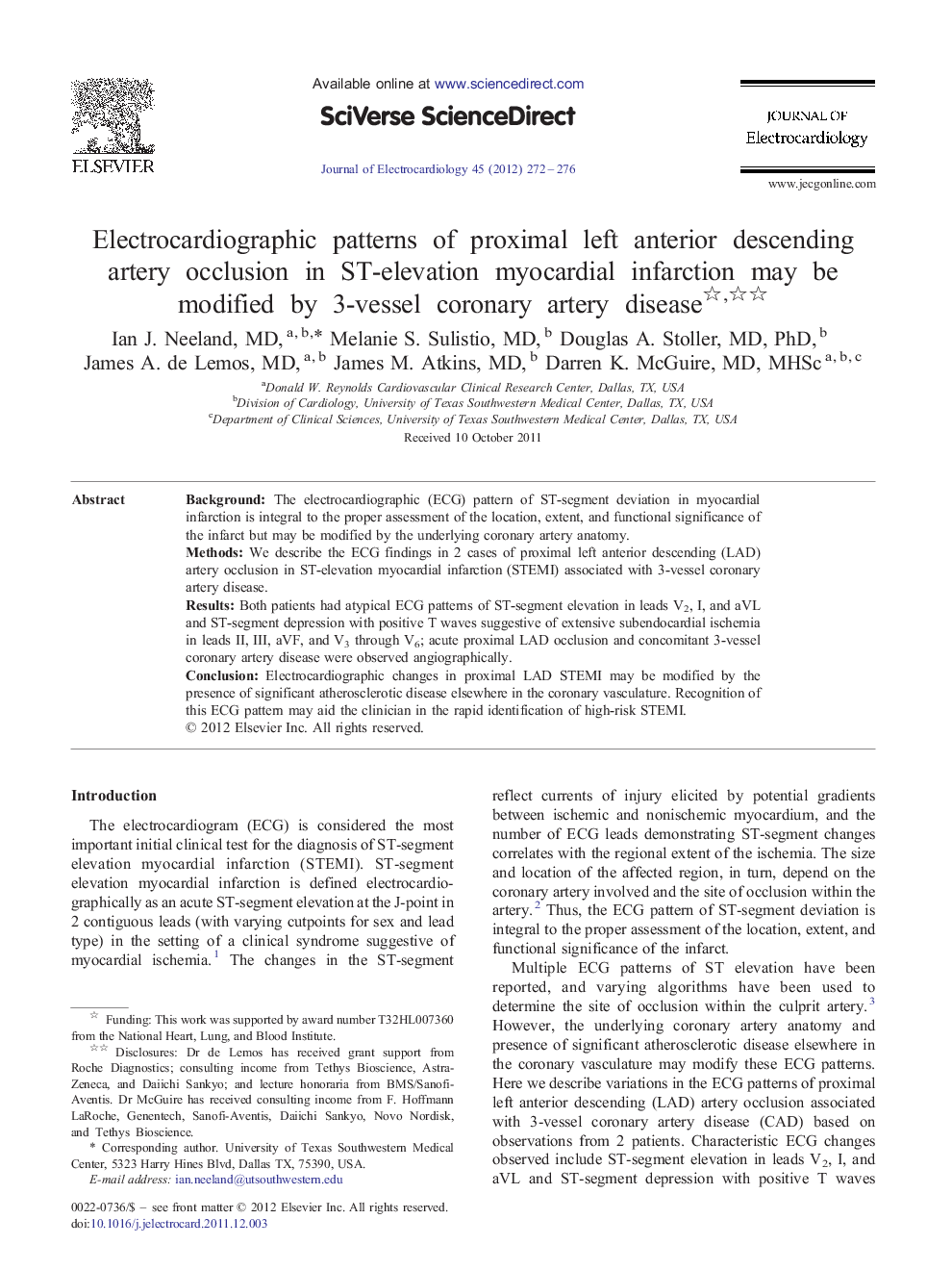| Article ID | Journal | Published Year | Pages | File Type |
|---|---|---|---|---|
| 5986875 | Journal of Electrocardiology | 2012 | 5 Pages |
BackgroundThe electrocardiographic (ECG) pattern of ST-segment deviation in myocardial infarction is integral to the proper assessment of the location, extent, and functional significance of the infarct but may be modified by the underlying coronary artery anatomy.MethodsWe describe the ECG findings in 2 cases of proximal left anterior descending (LAD) artery occlusion in ST-elevation myocardial infarction (STEMI) associated with 3-vessel coronary artery disease.ResultsBoth patients had atypical ECG patterns of ST-segment elevation in leads V2, I, and aVL and ST-segment depression with positive T waves suggestive of extensive subendocardial ischemia in leads II, III, aVF, and V3 through V6; acute proximal LAD occlusion and concomitant 3-vessel coronary artery disease were observed angiographically.ConclusionElectrocardiographic changes in proximal LAD STEMI may be modified by the presence of significant atherosclerotic disease elsewhere in the coronary vasculature. Recognition of this ECG pattern may aid the clinician in the rapid identification of high-risk STEMI.
